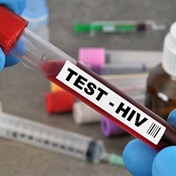The longevity of Aids patients is widely attributed to the success of antiretroviral drugs which became widespread in the 1990s, but the rise in cases presents new risks for spreading HIV, the US Centres for Disease Control said.
"Currently, more than 1.1 million people in the United States live with HIV, and as this number increases, so does the risk of HIV transmission," said CDC chief Thomas Frieden.
"Today, the most infections are among people under 30, a new generation that has never known a time without effective HIV treatments and who may not fully understand the significant health threat HIV poses."
The CDC's latest Morbidity and Mortality Weekly Report was issued three decades after its 5 June 1981 edition that described unusual cases of pneumonia and Kaposi's sarcoma in five young men in Los Angeles.
"This report later was acknowledged as the first published scientific account of what would become known as human immunodeficiency virus (HIV) and acquired immunodeficiency syndrome (Aids)," the CDC said.
Most recent figures
According to the most recent figures at the end of 2008, a total of 1,178,350 people in the United States were living with HIV, the CDC said.
About 33.3 million people were living with HIV worldwide at the end of 2009.
Since the epidemic first surfaced, nearly 600,000 people have died of Aids in the United States, the CDC said.
"Over the last three decades, prevention efforts have helped reduce new infections and treatment advances have allowed people with HIV to live longer, healthier lives," said Frieden.
"But as these improvements have taken place, our nation's collective sense of crisis has waned. Far too many Americans underestimate their risk of infection or believe HIV is no longer a serious health threat, but they must understand that HIV remains an incurable infection."
The number of new Aids cases reported annually peaked in 1992, with 75,457 that year.
Three years later, in 1995, the United States saw its highest number of deaths in a single year from Aids 50,628.
After that, antiretroviral drugs were introduced and fatalities began to fall, levelling out at an average of 38,279 Aids diagnoses and 17,489 deaths per year from 1999 to 2008, the CDC said.
Rates still high among gay men
In the United States, gay men continue to account for the majority of new cases at more than half of all new infections, mainly among whites.
However, African-American men are disproportionately affected by new HIV infections at a rate of six times that of white men and three times more than Hispanic men.
Among women, HIV is 15 times as common among blacks as it is among whites.
(Sapa, June 2011)
Read more:




 Publications
Publications
 Partners
Partners














